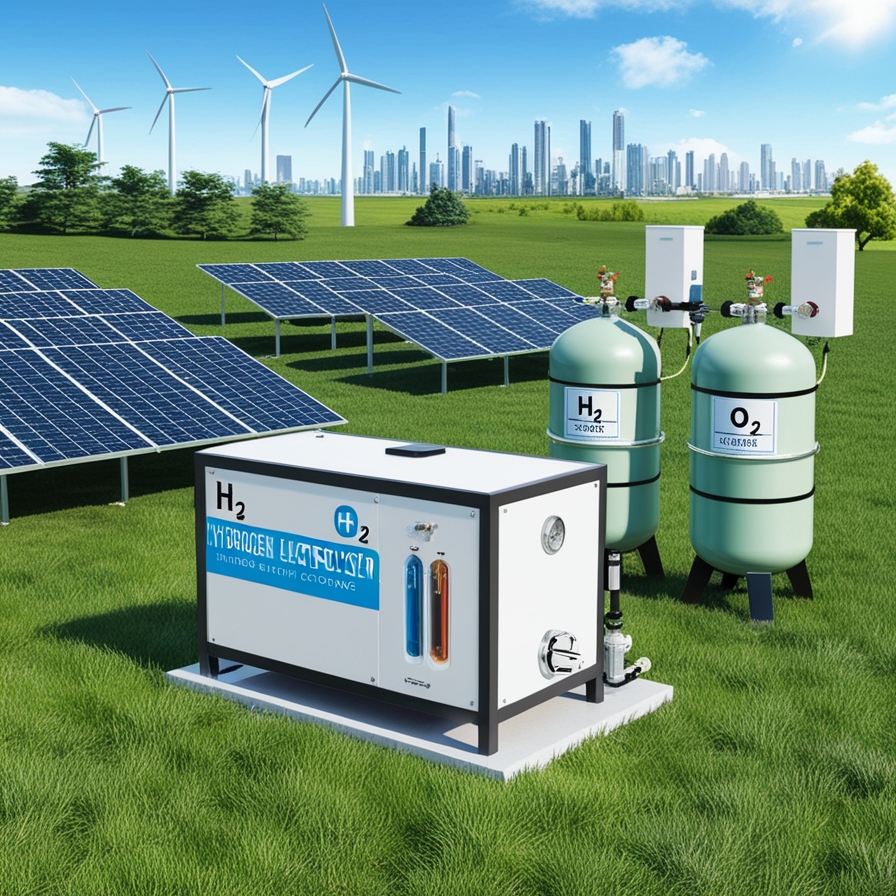Introduction
The transition to a sustainable energy future heavily relies on the integration of renewable energy sources (RES) such as wind and solar power. Hydrogen production through water electrolysis is gaining prominence as a means to store excess renewable energy, thereby stabilizing the grid and decarbonizing various sectors. Power electronics converters play a critical role in facilitating the integration of electrolysers with variable renewable energy sources (VRES). This article explores the role of power electronics converters in this integration, highlights technical challenges, provides examples of hydrogen electrolyser installations around the world, and discusses the research scope for electrical engineers.
Role of Power Electronics Converters
Overview
Power electronics converters are essential for managing the variable output of RES and ensuring the efficient operation of electrolysers. These converters perform several functions:
- Voltage and Frequency Regulation: Converters ensure that the voltage and frequency of the power supplied to the electrolyser are within acceptable limits.
- Maximum Power Point Tracking (MPPT): For solar PV systems, converters implement MPPT algorithms to maximize energy extraction.
- Power Conditioning: Converters condition the power from VRES to meet the specific requirements of the electrolyser, ensuring stable and efficient hydrogen production.
- Bidirectional Power Flow: In grid-tied systems, converters manage bidirectional power flow, allowing excess energy to be fed back into the grid or stored in batteries.
Types of Converters
- DC-DC Converters: These converters regulate the DC output from solar panels to match the input requirements of the electrolyser. They include buck, boost, and buck-boost converters.
- DC-AC Inverters: Inverters convert the DC output from RES into AC power compatible with the electrolyser or the grid.
- AC-DC Rectifiers: Rectifiers convert AC power from wind turbines or the grid into DC power required for the electrolyser.
Integration Strategies
- Direct Coupling: RES directly connected to electrolysers through power electronics converters. This strategy is simple but requires sophisticated control algorithms to handle variability.
- Grid-Connected Systems: Electrolysers are connected to the grid, with power electronics converters managing the interaction between RES, electrolysers, and the grid. This approach offers more flexibility and stability.
- Hybrid Systems: Combining RES with energy storage systems (batteries) and electrolysers, managed by power electronics converters, to ensure continuous hydrogen production.
Technical Challenges
Variability of Renewable Energy
- Fluctuations in Output: Wind and solar power are inherently variable, causing fluctuations in the power supplied to electrolysers. Power electronics converters must dynamically adjust to these changes to maintain stable operation.
- Transient Response: Converters must respond rapidly to sudden changes in power output from RES to prevent disruptions in the electrolyser’s operation.
Efficiency and Losses
- Conversion Losses: Each stage of power conversion introduces losses. Minimizing these losses is critical for the overall efficiency of the system.
- Thermal Management: Converters generate heat, requiring efficient thermal management solutions to maintain reliability and performance.
Control and Optimization
- Advanced Control Algorithms: Developing robust control algorithms for MPPT, power conditioning, and grid interaction is essential for optimizing the performance of integrated systems.
- Coordination with Grid Operations: Ensuring seamless coordination with grid operations, including demand response and grid stability measures, is a complex challenge.
Examples of Hydrogen Electrolysers Installed Around the World
HyBalance (Denmark)
The HyBalance project in Hobro, Denmark, uses wind power to produce hydrogen through electrolysis. The project integrates a 1.2 MW PEM electrolyser with a wind farm, demonstrating the feasibility of using wind power for large-scale hydrogen production.
Fukushima Hydrogen Energy Research Field (FH2R, Japan)
FH2R in Japan is one of the world’s largest hydrogen production facilities, utilizing a 10 MW electrolyser powered by a combination of solar power and grid electricity. This project aims to explore the potential of renewable hydrogen in disaster-prone areas.
REFHYNE (Germany)
The REFHYNE project at the Rhineland refinery in Germany integrates a 10 MW PEM electrolyser with renewable energy sources to produce green hydrogen for industrial applications. It showcases the potential for decarbonizing the chemical industry.
Research Scope for Electrical Engineers
Advanced Power Electronics Design
- High-Efficiency Converters: Researching and developing high-efficiency power electronics converters to minimize energy losses and improve overall system efficiency.
- Wide Bandgap Semiconductors: Exploring the use of wide bandgap semiconductor materials (e.g., SiC, GaN) for power electronics to enhance performance and reduce thermal losses.
Control Strategies and Algorithms
- Adaptive Control Systems: Developing adaptive control systems capable of handling the variability of RES while maintaining optimal electrolyser performance.
- Artificial Intelligence (AI) and Machine Learning (ML): Utilizing AI and ML to predict RES output, optimize power flow, and improve system reliability.
System Integration and Optimization
- Hybrid Systems: Investigating the integration of hybrid systems combining RES, energy storage, and electrolysers to ensure continuous and reliable hydrogen production.
- Grid Interaction: Enhancing the interaction between integrated systems and the grid to support grid stability, demand response, and energy arbitrage.
Sustainability and Lifecycle Analysis
- Lifecycle Assessment: Conducting lifecycle assessments of integrated systems to evaluate their environmental impact and identify areas for improvement.
- Sustainable Materials: Researching sustainable materials and manufacturing processes for power electronics components to reduce their environmental footprint.
Conclusion
Power electronics converters are pivotal in the integration of electrolysers with variable renewable energy sources, ensuring stable and efficient hydrogen production. While technical challenges such as variability, efficiency, and control remain, ongoing research and innovation hold promise for overcoming these barriers. With notable examples of hydrogen electrolyser installations around the world, the potential for green hydrogen as a key player in the sustainable energy landscape is increasingly evident. Electrical engineers have a vital role in advancing this field, from designing advanced power electronics to developing robust control strategies and optimizing system integration.
